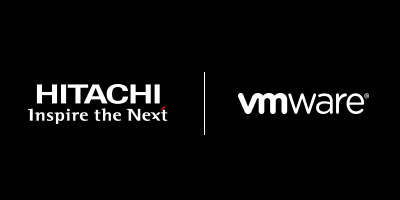More IT organizations are leaning on software-defined infrastructure solutions to simplify the management of their applications and workloads than ever before.
According to a recent study from Fortune Business Insights, the global software defined data center market is projected to skyrocket from $39.38 billion in 2021, to $169.99 billion over the next six years, or a CAGR of 23.2%. These software-defined strategies rely on virtual equivalents of server, network, and storage resources and they employ software, rather than IT professionals, to handle the deployment and reconfiguration of resources. The ultimate goal of the strategy is to deliver on-premises and cloud capabilities that match the velocity and flexibility of the public cloud.

But does this flexibility to use practically any infrastructure mean that infrastructure no longer matters? On the contrary, what it reveals is that infrastructure still matters. Software-defined infrastructure enables you to use more of your infrastructure in your new hybrid cloud environment, while helping you overcome the differences between ‘pretty good’ infrastructure and bullet-proof, high-performance infrastructure.
Hitachi’s partner, VMware, has made significant progress toward supporting organizations in the transition to hybrid cloud, the software-defined paradigm. Toolkits such as VMware Tanzu enable organizations to continue to use VMware’s familiar toolset to manage apps that are cloud-native, running in the cloud using VMware Cloud Foundation, or running on-premises on VSphere.
This capability allows organizations to move to a hybrid cloud model quickly and easily by minimizing disruption and skills gaps, while addressing operational efficiency. A fundamental reason for this is that VMware designed all of their tools and application services to work together and leverage the flexibility of software-defined infrastructure. This gives organizations a big head-start by enabling them to utilize the ease of use and familiarity of VMware platforms and tools, while providing more options for existing and future infrastructure.
What matters most when deploying software-defined infrastructure?
To achieve the goal of a single management plane for all your workloads, physical infrastructure choices matter a lot. If your physical infrastructure doesn’t have the capabilities and features you need, there is no way for your software-defined infrastructure to conjure those things for you magically. The enthusiasm for software-defined infrastructure has thus created the potential for significant misconceptions.
Many organizations are not ready or able to put everything into a public cloud-style environment. Data protection, reliability, automation, and SLAs don’t just disappear. If anything, the abstraction, simplification, and automation that are the appealing hallmarks of a software-defined infrastructure mean that you’re more in need of assurances such as a 100% data availability guarantee that Hitachi storage provides.
VMware’s software-defined layer makes it easier for organizations like yours to deploy VMware tools on whatever infrastructure you choose. This includes the traditional VSphere-managed applications in your data center, cloud-resident VMware applications deployed via VMware Cloud Foundation, and cloud-native services and workloads. A software-defined infrastructure allows VMware Tanzu to run them all, and VSphere to run them better. But only if your on-premises infrastructure is designed end-to-end to support this better world.
How Hitachi Vantara can unlock software-defined potential with VMware
To support the new hybrid cloud IT model, Hitachi has worked to maximize its integration with VMware tools and platforms. The AIOps software for infrastructure included with our entire portfolio, Hitachi Ops Center, fully integrates with the VMware portfolio. This tight coupling makes it possible to execute all of Hitachi’s AI-based analytics and automation directly within VMware environments. With Hitachi, your entire storage environment shares a common operating system, creating a single data fabric that extends across your entire infrastructure. The result is that when your developers want to deploy a new service, Ops Center can automatically connect the service to the right storage to meet your performance, protection, and SLA requirements.
Your storage infrastructure choices also matter because you must be able to manage all of your application deployment permutations. Overtime, your environment is likely to become increasingly complex, with many different workloads and services running in various on prem and cloud locations. Ultimately, it will be easier for you to manage an environment with less complexity, but that doesn’t mean compromising. The choice will come down to using multiple discrete tools and specialized staff to manage variation separately, or to have a single management view—like that enabled by Hitachi—that embraces your entire infrastructure. That is why Hitachi has prioritized integrating its AIOps with VMware so you can execute automation, management, and protection from within VMware. And even if you already have other storage, Hitachi can virtualize that, preserving your prior investments while increasing its flexibility.
Being software-defined won’t make your storage faster or more available. That is why your infrastructure choices still matter. By standardizing your storage infrastructure with Hitachi Vantara, your organization can have the availability, reliability, performance, and flexibility of the industry’s gold standard no matter how it evolves.
Ian Clatworthy is Director, Product Marketing, Data Infrastructure, Hitachi Vantara.
Related


























































































